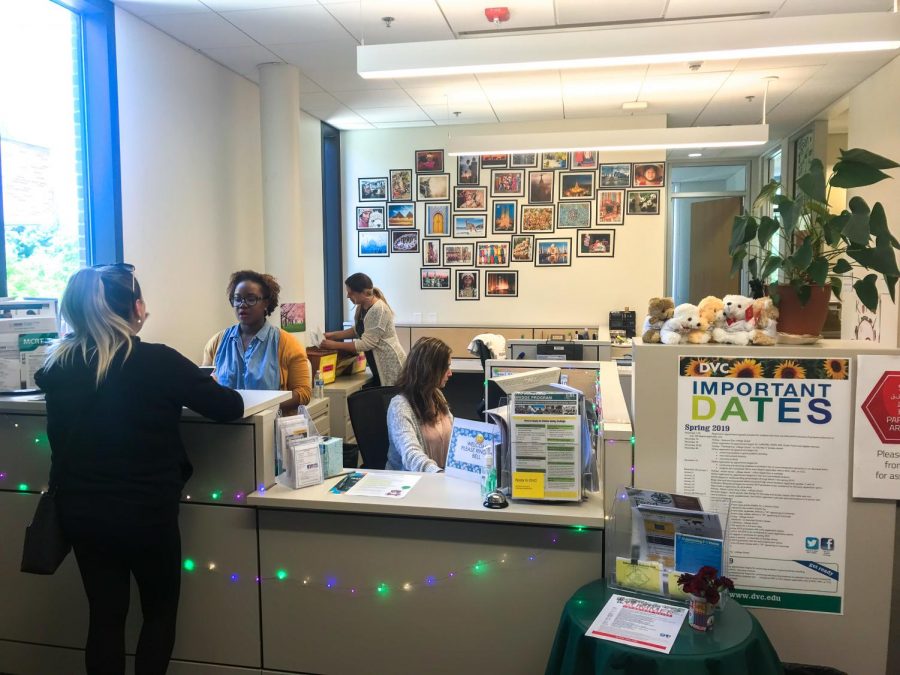Traveling for international students; the road back to the U. S.
The ISAS staff works to help international students with their legal stay, travel documents, and much more. (Pavlina Markova/The Inquirer).
May 22, 2019
With the end of the semester coming, many students are planning to leave the country in summer. Among those, there are many who are leaving the country not to travel to places that are unknown to them, but to travel back home to visit their families. The ones for whom coming back to the U. S. is going to be a little bit more of a struggle than for other young vacationers are international students. What do they need to do in order to have a trouble-free passage back into the States?
“The good news is, it’s… not easy, but pretty straightforward,” said Renée Savage, College International Education Program Coordinator.
She and the staff of the ISAS office are available to answer questions students might have and help them out with the process.
“I didn’t find the paperwork difficult, because the ISAS takes care of it,” said Alex Park, an international student from Korea who traveled back home during Christmas break.
The first thing international students need to worry about when planning to travel outside the U. S. is their I-20 form.
“I-20 is, in other words, an invitation to study,” said Savage.
International students need this form to be able to enter the United States in combination with their visas. They should head to the ISAS office preferably as soon as they book their flights, and get their I-20 documents signed since it takes a couple of weeks before they can pick them up.
“Right now, the turnaround is about two weeks,” said Savage.
However, especially before busy times like Christmas or summer break, the process may take up to three weeks.
“I got my I-20 returned just one day before the flight,… It took about three weeks,” said Ruby Woo, an international student from Korea.
She and her sister Luna traveled back during Christmas break and submitted their I-20 forms to the ISAS office right after they booked their flights. However, since the office was really busy during that time, they got their forms back less than 24 hours before their flight.
“I was really worried about it, … I thought, what if they take a month? (Because) a lot of people were coming there, saying, ‘sign it!'” said Luna Woo.
There are a couple of circumstances that can delay the process, or prevent the office from being able to sign the document. Students who have unpaid fees or aren’t registered for classes might find it difficult to obtain the signature. Unsatisfactory GPA might also pose a problem, however, Savage says it depends on the circumstances. If, for example, a pattern of progress is visible, then even students with a GPA less than 2.0 might be able to get their I-20 forms signed. However, according to Savage, it’s very rare to see this happen.
“As a generalization, most international students do very well academically,” said Savage, noting that a below-satisfactory GPA “won’t necessarily prevent (them) from signing.”
Although the government-prepared form says that the travel signature is good for a year after it was obtained, Savage says otherwise.
“If the goal is to make it easier to get back to the U. S., (the signature) is probably good for six months,” she said. If the signature is older, she recommends getting a new one.
Theoretically, signed I-20 form and a valid visa is all students need to enter the country. But there are things that could make the entry much easier.
“It is good to be overly prepared,” said Savage, naming a few items that can make entering the U. S. easier.
Amongst those are transcripts, past and/or future class schedules, financial situation information, enrollment verification, and the school contact information.
“I prepared transcripts, enrollment confirmation, … and other documents to get into the US,” said Ruby Woo.
The contact information, preferably directly to the ISAS office, can speed up the process in case officials at Immigration and Customs need to confirm the students’ status with the school.
“Once in a while, we get calls from the border, verifying students’ status,” said Savage.
In the case of students from countries that had a travel ban issued for them, Savage isn’t optimistic.
“We would encourage them not to go,” she said, however, since those students have a certain purpose in the country other than just visiting or traveling, they could be all right trying to re-enter. Still, it isn’t encouraged.
In the case of an emergency when students need to leave immediately and can’t wait for their I-20 forms to be signed, Savage says they need to depend on friends.
“It’s good to have a backup plan … because we don’t mail continuing students’ I-20s internationally,” she said. However, if a student drops off their I-20 and gives the office the notice and the name, a friend can pick the form up for them.
Savage’s final tip for international students planning to travel is “to come to the workshops and Monday meetups,” to have the most recent information available.
“I encourage everybody to talk to us… Our number one priority is to inform and help out,” said Savage. Students can schedule an informative meeting anytime in person or online.







































































